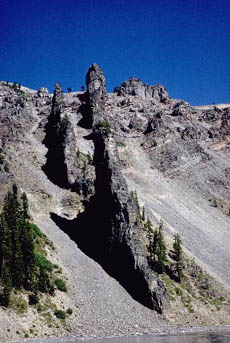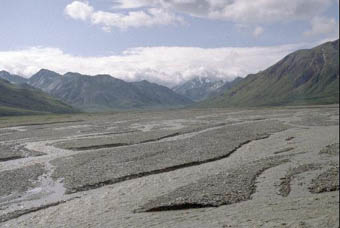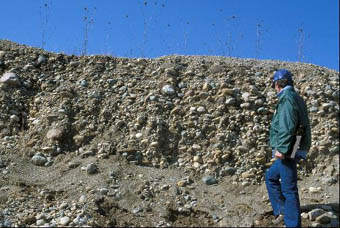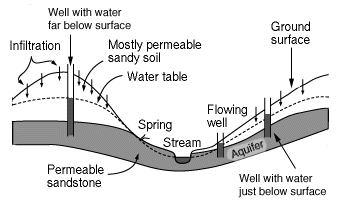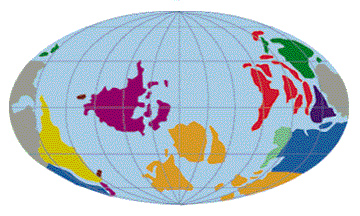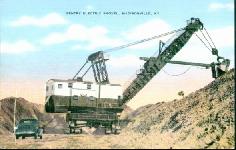Click on image for full size
Courtesy of Jerome Wyckoff
Step 1: Weathering (Destroying Rock!)
Rocks are broken apart by two types of weathering.
By chemical weathering, the minerals in rocks are dissolved into rainwater or changed from one type of mineral into another. Climate is an important factor determining the rate of chemical weathering. Warm, moist environments have more chemical weathering because water is needed for the chemical changes and warmth facilitates the reactions. Not all minerals are susceptible to chemical weathering. Rocks made of the mineral calcite, like limestone and marble, are very likely to dissolve when in contact with weakly acidic rain water. Feldspar and quartz, the most common minerals in the igneous rock granite, have very different levels of resistance to chemical weathering. Quartz doesn’t chemically weather very easily, but feldspar does. It chemically changes into clay minerals over hundreds and thousands of years.
By physical weathering, rocks are mechanically broken apart into smaller pieces. A variety of agents can be responsible for breaking up rocks including water and wind. Tree and plant roots often push rocks apart, especially when they grow in areas with little topsoil. If water freezes into cracks in a rock it will expand as it freezes, opening the crack even more. Large amounts of ice were responsible for physical weathering of rocks during the last Ice Age. They scraped the surface of vast areas of the land, removing bits of the rocks they moved across. Smaller glaciers continue this process in some areas of the Earth today.
Silicate minerals that form at high temperatures in Bowen’s series are less stable when they are at the cool Earth’s surface. They will weather away before silicate minerals that formed at lower temperatures.
Weathered rock fragments are either transported by water or wind, or they become a part of the soil. Soil is formed as rocks are weathered at the surface and combined with organic material like plant and animal remains. There are many different types of soil depending on rock weathering and the amount of organic material available.


